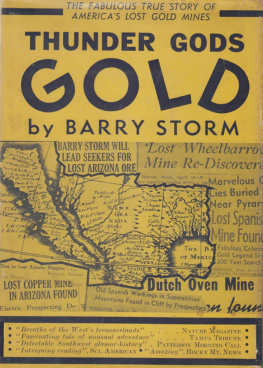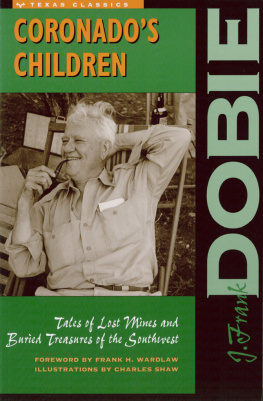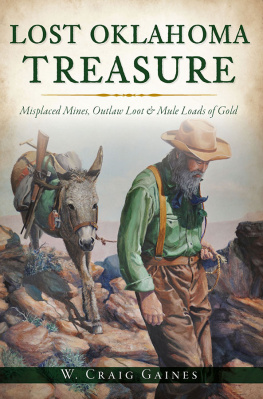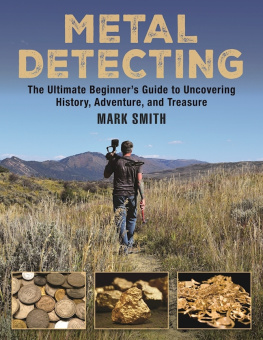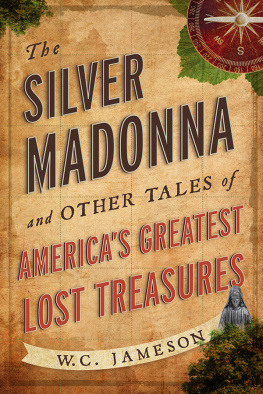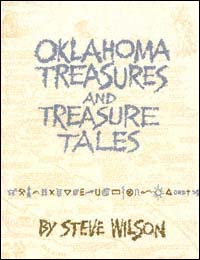Preface
On the Trail of Lost Treasure |
| I do not maintain that the legends told in the following pages are fact. I do maintain that those who told them believed them to be true. My purpose has been to record each tale while someone was still living to tell it. When that was no longer possible, the only alternative was to seek the story from earlier published sources. In both these endeavors I feel that I have been successful. |
| I must admit that often the origin of the story interested me more than the story itself. No one has successfully explained why legends of buried treasure are pandemic throughout the Southwest. It is more difficult to understand the multitude of tales in Oklahoma, because this state experienced no gold rush of the magnitude of western states. It had no documented Spanish forts or missions or permanent settlements, and yet its legends are no less in number than those of states that had a more auriferous magnetism. |
| While compiling Legends of Texas for the Texas Folklore Society in 1924, J. Frank Dobie observed that no one particular area of his state had more legends than another, and, "moreover, instead of diminishing in number, these legends are constantly increasing."1 The reason is not a simple one, but perhaps Dobie answered it best when he said that, because "the Spanish found immense wealth in America, they became credulous of mythical wealth. Later ages and folk, failing to inherit their wealth, inherited their credulity."2 |
| Early in this century the father of Oklahoma geology, Charles N. Gould, spent more than twenty years traveling over the Plains and throughout Oklahoma. In that time he made more than a thousand night camps, during which he was often entertained by legends of buried treasure. |
| As revealed in an early article, "Hidden Treasure on the Plains," for Sturm's Magazine, Gould observed that the stories shared a common form. Wherever he went, he said, "from the Dakotas to the Gulf and from the Mississippi to the Rockies, the legend of buried treasure is omnipresent. |
| There is probably not a county in any one of the states of the plains where the story is not told and believed."3 |
| Almost always the story concerned Mexicans who were attacked by Indians and forced to bury their gold. All were massacred except for one or two, who escaped. Then, years afterward, onenow an old manreturned to refind the treasure hidden so long before. Always there were mysterious signs and symbols left to lead him back to the lost fortune, and almost always he found the prescribed etching of a cross or triangle or arrow, which placed him at the brink of the treasure. But, alas, he returned to his native land unsuccessful in his final attempt to find the gold. Wrote Gould: |
 |  | | How much of the truth there may be in these various legends, no one may venture to guess. It would be folly to assert that all of the tales are false, but certainly still greater folly to believe that all are true. As a person travels over Oklahoma and the surrounding states, however, and listens to these various tales, he is forced to one of the following conclusions: Either there is a wonderful amount of treasure hidden on the plains, or the world is full of deluded people, or there are a tremendous lot of liars. |
| I have tried to determine the historical reasons for the prevalence of treasure tales in Soonerland. For the most part historians have turned a deaf ear to tales of lost gold. But, if given a chance, the treasure legendoral traditioncan often paint a picture that history has failed to record. Not everything is to be found in the documents. Sometimes when history has failed, tradition has succeeded. In the case of the "Great Spanish Road to Red River" traditionnot historyhas preserved its route, a trail sprinkled with tales of lost Spanish gold all the way from Santa Fe to New Orleans. The legends alone virtually mark this long-forgotten ancient trail down the North Fork of Red River and its mainstream. |
| The Spanish conquistadors blazed the trail for less official treasure quests, many of which history failed to record. But how can one ignore the signs, the documents written not on paper but in ancient |
|


